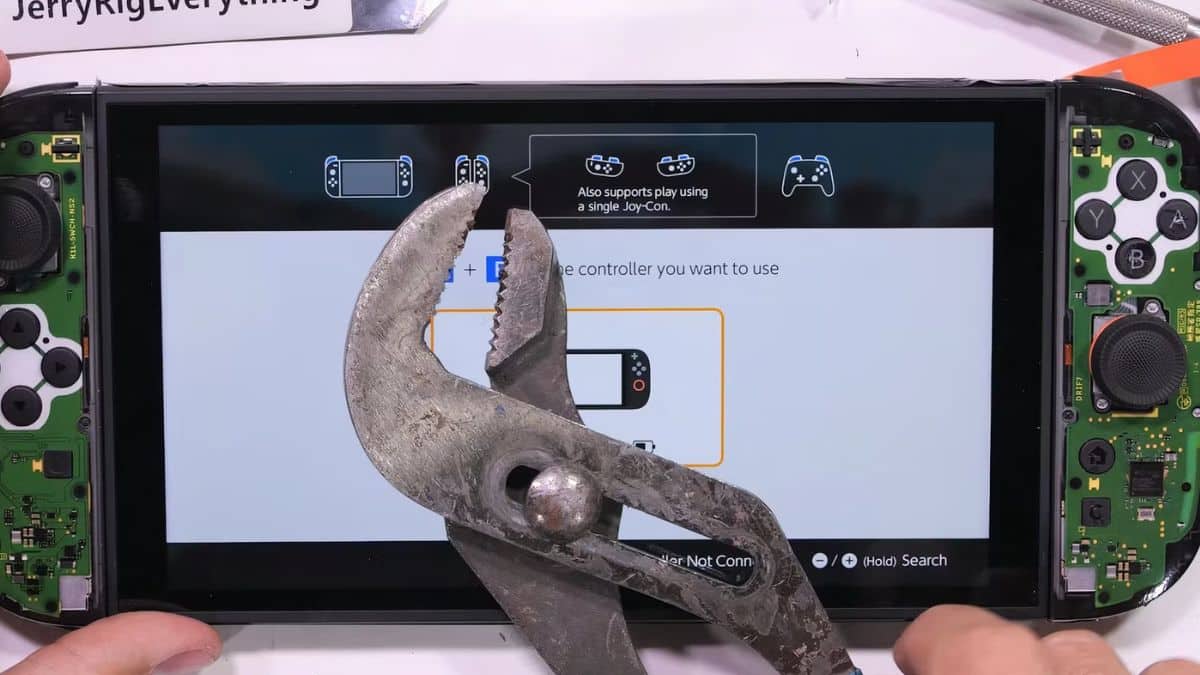Inside the Nintendo Switch 2: a YouTuber’s detailed teardown reveals both improvements and potential issues with Nintendo’s latest console. TronicsFix, known for meticulous device disassembly, has recently published videos examining the internal components of both the console and its new Joy-Con controllers. The findings reveal interesting insights about Nintendo’s design choices and raise some concerns about long-term durability and repairability.
Nintendo Switch 2 internal design: improvements with caveats
The Nintendo Switch 2’s internal architecture demonstrates significant improvements over its predecessor. The teardown videos from early June 2025 confirm what many had hoped: Nintendo has enhanced the overall build quality. The interior layout appears more organized and thoughtfully designed than the original Switch.
Thermal management has received particular attention in this iteration. The console features a well-positioned cooling system that includes a compact fan, copper heat pipe, and an extensive heatsink covering much of the system-on-chip (SoC). Even the application of thermal paste shows careful attention to detail—something not always guaranteed in consumer electronics.
However, Nintendo has introduced some design elements that may frustrate repair enthusiasts. Accessing the internal components requires removing colored stickers (blue and red/orange) that conceal screws where the Joy-Cons attach. As TronicsFix points out, these stickers cannot be preserved during removal, effectively creating evidence of tampering.
More concerning for long-term maintenance is the USB-C port configuration. This essential component, which handles both charging and docking functions, is directly soldered to the motherboard. This design choice significantly complicates repairs if the port becomes damaged through regular use.
The screen connector presents another potential weak point. According to the teardown analysis, this connector is exceptionally thin and delicate, making screen replacement a high-risk operation even for experienced technicians.
In 2019, Iceland Approved the 4-Day Workweek: Nearly 6 Years Later, All Forecasts by Generation Z Have Come True
At 94, He’s One of Apple’s Biggest Shareholders, and Doctors Can’t Explain How He’s Still Alive-Coca-Cola and McDonald’s Are Part of His Daily Routine
Joy-Con 2 controllers: persistent drift concerns
The new generation of Joy-Con controllers shows some internal reorganization. Battery access is more straightforward, and button replacement appears less complicated. However, the most critical component—the analog sticks—may continue to be problematic.
Contrary to what many Nintendo fans hoped for, the Joy-Con 2 controllers do not implement Hall-effect technology for their analog sticks. This confirmation came after TronicsFix dismantled the sticks completely, finding no magnets that would indicate this more durable technology.
This discovery aligns with statements made by Nintendo of America’s Nate Bihldorff back in April, but still disappoints those who expected a definitive solution to the infamous “Joy-Con drift” issue that plagued the original Switch. The continued use of traditional analog sticks suggests these new controllers may eventually develop similar problems, particularly for players who spend extensive time on games like:
- Mario Kart World
- Donkey Kong Bananza
- Other intensive analog stick games
It races through the universe at 300,000 km/s - and never runs out of energy
Beneath your feet: an ancient forgotten continent resurfaces in Europe
Teardown insights: what this means for Switch 2 owners
The TronicsFix analysis provides valuable information for prospective Switch 2 owners. Here’s how the findings break down in terms of practical implications:
| Component | Improvement Status | Repair Difficulty |
|---|---|---|
| Cooling System | Significantly Improved | Moderate |
| USB-C Port | Similar to Original | High (Soldered) |
| Screen Connection | Potentially Weaker | Very High |
| Joy-Con Analog Sticks | Minimal Change | Moderate |
While Nintendo has made notable improvements to overall build quality and thermal management, the company seems to have prioritized sleek design and integration over repairability. This approach creates a mixed situation where the console may perform better initially but could present significant challenges for maintenance over its lifespan.
The continued use of potentially drift-prone analog sticks is particularly noteworthy given the widespread issues with the original Switch. Players who invest in the new system should be aware that this problem might recur despite the controller’s refreshed design.
Despite these concerns, the Switch 2 represents an evolution rather than a revolution in Nintendo’s hardware approach. The improved thermal management should benefit performance in demanding games, even if some repair-related decisions might frustrate technically-inclined users in the future.







